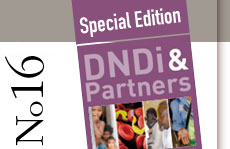 |
|
|
|
|

Scientific Communication Manager
and Sadia Kaenzig
Senior Communication and Press Officer
The transmission of malaria in Brazil is concentrated in the Legal Amazon, where 99,9% of total cases are reported. This region covers the states of Acre, Amazonas, Amapá, Maranhão, Mato Grosso, Pará, Rondônia, Roraima and Tocantins. According to Brazil's Ministry of Health, there has been an increase of cases of malaria in the region since the 1970's, culminating in 1999 with a record of 635,646 cases. One of the most obvious reasons for the sudden rise has been the huge influx of immigrants to the Amazon region, most of whom have no immunity to malaria. The building of the Trans Amazon highway, which began in the late 1960s, made the Amazon basin more accessible. People have also been drawn by the prospects of finding mining jobs. These settlers remain vulnerable to being bitten by malarial mosquitoes because they live in makeshift shelters, camp beside streams, and wear minimal clothing, rendering them more vulnerable to malaria.

One of the most common species of parasite causing malaria in the Amazon is Plasmodium falciparum. It is often fatal if not treated. It is also resistant to most antimalarial drugs, including Chloroquine.
In 2005, in 3 municipalities in the Amazon Basin (Cruzeiro do Sul, Mâncio Lima, and Rodrigues Alves), approximately 40,000 people suffered from malaria with around 12,000 P. falciparum cases. Because of this high burden of disease and concerns about increasing antimalarial resistance, a decision was taken to study the impact of ASMQ in programmatic use within the region.
An intervention study, with funding from the Ministry of Health and PAHO-RAVREDA/AMI (the Pan-American Health Organisation [PAHO] – Amazon Network for the Surveillance of Antimalarial Drug Resistance [RAVREDA] / Amazon Malaria Initiative [AMI]), was begun in 2006 by the National Programme of Control of Malaria and health authorities in the state of Acre. In the first year of the study, approximately 17,000 patients were treated. A significant impact was seen on the incidence of malaria in the region.
Preliminary results of the 1-year intervention shows the significant impact of ASMQ used in conditions of controlled deployment in programmatic use. Following the introduction of fixed-dose combination in 3 of the 22 state municipalities, P. falciparum malaria cases were reduced in the state from 32,829 in 2006 to 9,921 cases in 2007, accounting for a 69.8% drop.
In addition, malaria-related hospitalizations showed a reduction of 62.1%, from 2,590 to 981 hospital admissions in the same period.
Its is also important to stress that this study not only had a positive impact in the reduction of the disease burden on human health but also in alleviating social and economic consequences of the disease among the most affected population groups.

Scenes from Acre state, where a high burden of malaria led health officials to launch the intervention study.